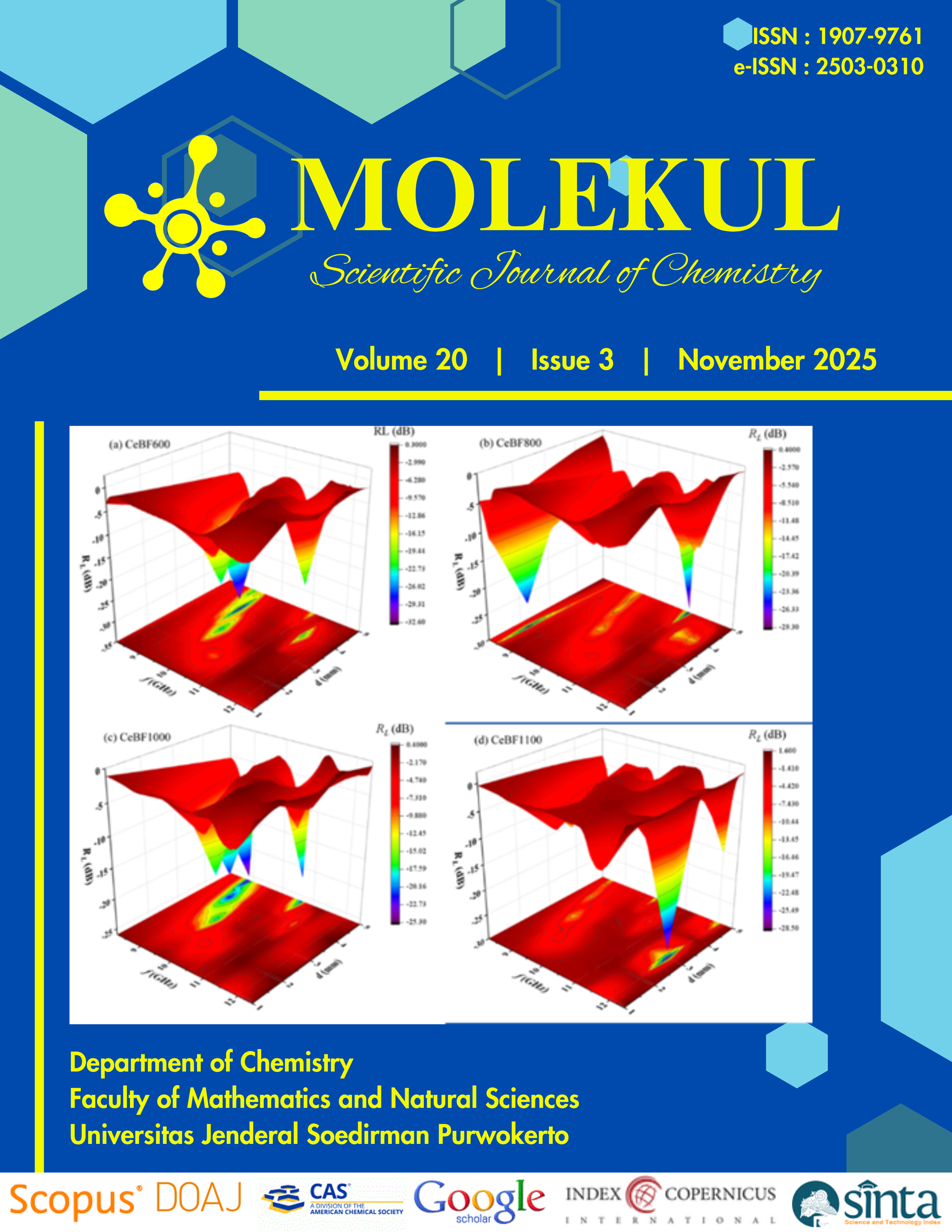Some Morphological and Physiological Characters of Vanda bensonii Bateman Seedlings under Colchicine Application
Abstract
ABSTRACT. Vanda bensonii is an orchid species of some potentials to develop, one of which is by means of induced mutation resulting in polyploid individuals. Such individuals usually exhibit better phenotypical performance than that of the normal diploids. This can be performed by the application of antimitotic chemicals such as colchicine. This study aims to know the effect of colchicine on some morphological and physiological characters of V. bensonii seedlings and to find out the effective concentration in producing the most promising ideal phenotypical performance of the orchid species. The study was conducted at the Plant Physiology Laboratory, the Faculty of Biology, Universitas Jenderal Soedirman by using an experimental method arranged in a Completely Randomized Design with treatments consisting of five colchicine concentrations, i.e. 0, 20, 40, 60, and 80 µM. Each treatment was subjected to five replications giving rise to a total of 25 experimental units. The data obtained were analyzed using ANOVA with an F test of 0.05 and 0.01. Further analysis using Tukey test of 0.05 was performed when significant differences among treatments were found. The results show that colchicine significantly reduces plant height of V. bensonii, in which control plant shows taller in comparison to all treatments. Similarly, it is also the case with chlorophyll a content, while there is no significant effect of colchicine on leaf width, leaf length, leaf number, shoot number, chlorophyll b and total chlorophyll contents. Nevertheless, colchicine concentration of 60 µM is found most effective in increasing shoot number. It can be concluded that colchicine has significant effects on chlorophyll a content of V. bensonii, implying its potential application to create mutants of better performance.
Keywords: colchicine, morphological characters, physiological characters, polyploid, Vanda bensonii
Authors agree with the statements below:
- Authors automatically transfer the copyright to the MOLEKUL journal and grant the journal right of first publication with the work simultaneously licensed under a Creative Commons Attribution 4.0 International License (CC BY 4.0).
- Authors are able to enter into separate permission for the non-exclusive distribution of the journal's published version of the work (e.g., post it to an institutional repository or publish it in a book), with an acknowledgment of its initial publication in this journal.













